History
During the early 19th century, Cheltenham became fashionable as a spa, and the population grew, with many elderly and ailing people taking up residence there. As a result, there was not enough burial space, even after a new burial ground was laid out in the town in 1829–1830. In 1857 the Improvement Commissioners for Cheltenham set out to use the Burial Acts to provide a large new cemetery. They established a Burial Board, and this looked for an area of land of between twelve and twenty acres (c 5–8ha) within two miles of Cheltenham. In February 1861 land at Bouncer's Lane was bought, some from the Rev. John Edwards and some from the Poor Lands. [1] [2]
In July 1861 the Burial Board decided to announce a competition for the design of its new cemetery, with a prize of forty guineas for the winning design. In due course this was won by the architect W. H. Knight of Cheltenham, who proposed two Gothic chapels, joined by a porte-cochère, with a spire above it. [3] These buildings were built between 1862 and 1864 at a cost of about £4,300, in a park with many ornamental trees and shrubs. The new cemetery was consecrated by Charles Ellicott, Bishop of Gloucester, on 19 November 1864. [1]
In 1883 the cemetery was extended to the east and new land to the north-west was bought. Further new areas were acquired in 1926 and in the 1990s. [1]
In 1938, a crematorium was built near the south chapel, at a time when there were only a few dozen in Great Britain. In 1995, a restoration programme for the cemetery buildings was launched. [1]

Kensal Green Cemetery is a cemetery in the Kensal Green area of North Kensington in the Royal Borough of Kensington and Chelsea and the London Borough of Hammersmith and Fulham in London, England. Inspired by Père Lachaise Cemetery in Paris, it was founded by the barrister George Frederick Carden. The cemetery opened in 1833 and comprises 72 acres (29 ha) of grounds, including two conservation areas, adjoining a canal. The cemetery is home to at least 33 species of bird and other wildlife. This distinctive cemetery has memorials ranging from large mausoleums housing the rich and famous to many distinctive smaller graves and includes special areas dedicated to the very young. It has three chapels and serves all faiths. It is one of the Magnificent Seven cemeteries in London.

West Norwood Cemetery is a 40-acre (16 ha) rural cemetery in West Norwood in London, England. It was also known as the South Metropolitan Cemetery. One of the first private landscaped cemeteries in London, it is one of the "Magnificent Seven" cemeteries of London, and is a site of major historical, architectural and ecological interest.

Witton Cemetery, which opened in Witton in 1863 as Birmingham City Cemetery, is the largest cemetery in Birmingham, England. Covering an area of 103 acres (0.42 km2), it once had three chapels; however, two of these were demolished in 1980. The cemetery would perform up to 20 burials a day; however, it was declared "full to capacity" in December 2013, allowing burials only in existing family plots, or of babies or cremated remains. Extra capacity was therefore provided at the nearby New Hall Cemetery. The cemetery office was opened in 1999.
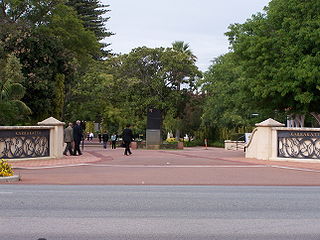
Karrakatta Cemetery is a metropolitan cemetery in the suburb of Karrakatta in Perth, Western Australia. Karrakatta Cemetery first opened for burials in 1899, the first being that of wheelwright Robert Creighton. Managed by the Metropolitan Cemeteries Board, the cemetery attracts more than one million visitors each year. Cypress trees located near the main entrance are a hallmark of Karrakatta Cemetery. The cemetery contains a crematorium, and in 1995 Western Australia's first mausoleum opened at the site.
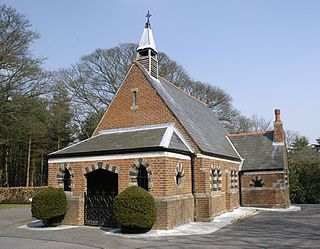
Aldershot Military Cemetery is a burial ground for military personnel, or ex-military personnel and their families, located in Aldershot Military Town, Hampshire.

Fawkner Memorial Park is located in the northern Melbourne suburb of Hadfield, Victoria, Australia. It is the largest cemetery by land size in the state, and managed by Greater Metropolitan Cemeteries Trust.
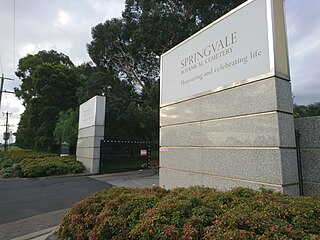
The Springvale Botanical Cemetery is the largest crematorium and memorial park in Victoria, Australia, located in the southeastern Melbourne suburb of Springvale.

South London Crematorium and Streatham Park Cemetery is a cemetery and crematorium on Rowan Road in Streatham Vale. It has always been privately owned and managed and is now part of the Dignity plc group. The South London Crematorium is situated within the cemetery grounds and opened in 1936.
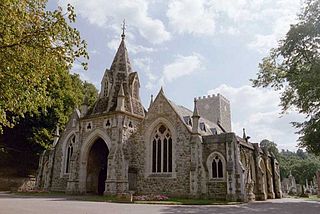
Putney Vale Cemetery and Crematorium in southwest London is located in Putney Vale, surrounded by Putney Heath and Wimbledon Common and Richmond Park. It is located within 47 acres (19 ha) of parkland. The cemetery was opened in 1891 and the crematorium in 1938. The cemetery was originally laid out on land which had belonged to Newlands Farm, which was established in the medieval period.

Southern Cemetery is a large municipal cemetery in Chorlton-cum-Hardy, Manchester, England, 3 miles (4.8 km) south of the city centre. It opened in 1879 and is owned and administered by Manchester City Council. It is the largest municipal cemetery in the United Kingdom and the second largest in Europe.
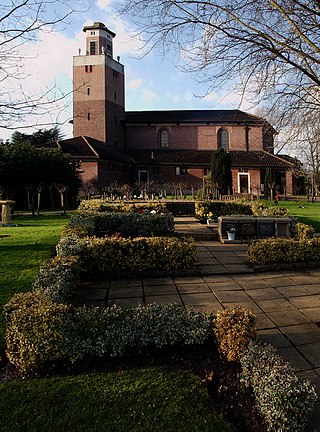
East Finchley Cemetery is a cemetery and crematorium in East End Road, East Finchley. Although it is in the London Borough of Barnet, it is owned and managed by the City of Westminster.

Woking Crematorium is a crematorium in Woking, a large town in the west of Surrey, England. Established in 1878, it was the first custom-built crematorium in the United Kingdom and is closely linked to the history of cremation in the UK.

The English coastal city of Brighton and Hove, made up of the formerly separate Boroughs of Brighton and Hove in East Sussex, has a wide range of cemeteries throughout its urban area. Many were established in the mid-19th century, a time in which the Victorian "cult of death" encouraged extravagant, expensive memorials set in carefully cultivated landscapes which were even recommended as tourist attractions. Some of the largest, such as the Extra Mural Cemetery and the Brighton and Preston Cemetery, were set in particularly impressive natural landscapes. Brighton and Hove City Council, the local authority responsible for public services in the city, manages seven cemeteries, one of which also has the city's main crematorium. An eighth cemetery and a second crematorium are owned by a private company. Many cemeteries are full and no longer accept new burials. The council maintains administrative offices and a mortuary at the Woodvale Cemetery, and employs a coroner and support staff.

The two Camberwell cemeteries located close to each other in Honor Oak, south London, England, are notable for their burials and architecture. They have been an important source of socioeconomic data documenting the historical growth and changing demography in the community for the Southwark area since 1855.

Karori Cemetery is the second-largest cemetery in New Zealand. It opened in 1891, and is located in the Wellington suburb of Karori.
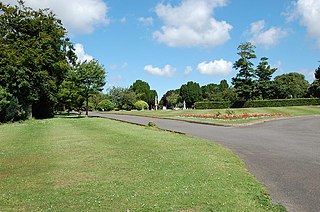
Hastings Cemetery is a cemetery in Hastings, East Sussex, located off the Ridge road.

Plumstead Cemetery is a cemetery in Plumstead, southeast London. It is situated south-east of Woolwich, to the north of Wickham Lane, west of Lodge Hill, and south of Bostall Wood.
Hereford Cemetery and Crematorium is the municipal burial ground and crematorium for the city of Hereford, England, and its surrounding area. It is located on the south side of Westfaling Street west of the city centre.

Western Necropolis is a cemetery complex in Glasgow, Scotland located to the north of the city centre. As well as the actual Western Necropolis cemetery established in 1882, it is bordered by Lambhill Cemetery which opened in 1881, St Kentigern's Cemetery that opened in 1882, and Glasgow (Garnethill) Hebrew Burial Ground founded in 1989.

Bournemouth North Cemetery and Bournemouth Crematorium is a municipal cemetery in Bournemouth, England. The cemetery is located between the suburbs of Charminster, Strouden Park and Queen's Park and is owned by Bournemouth, Christchurch and Poole Council.




















